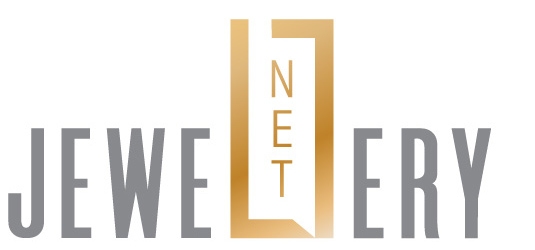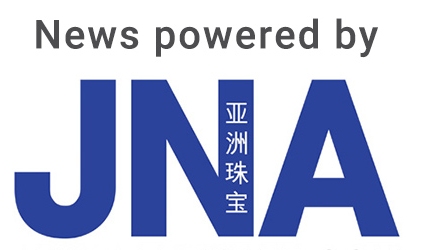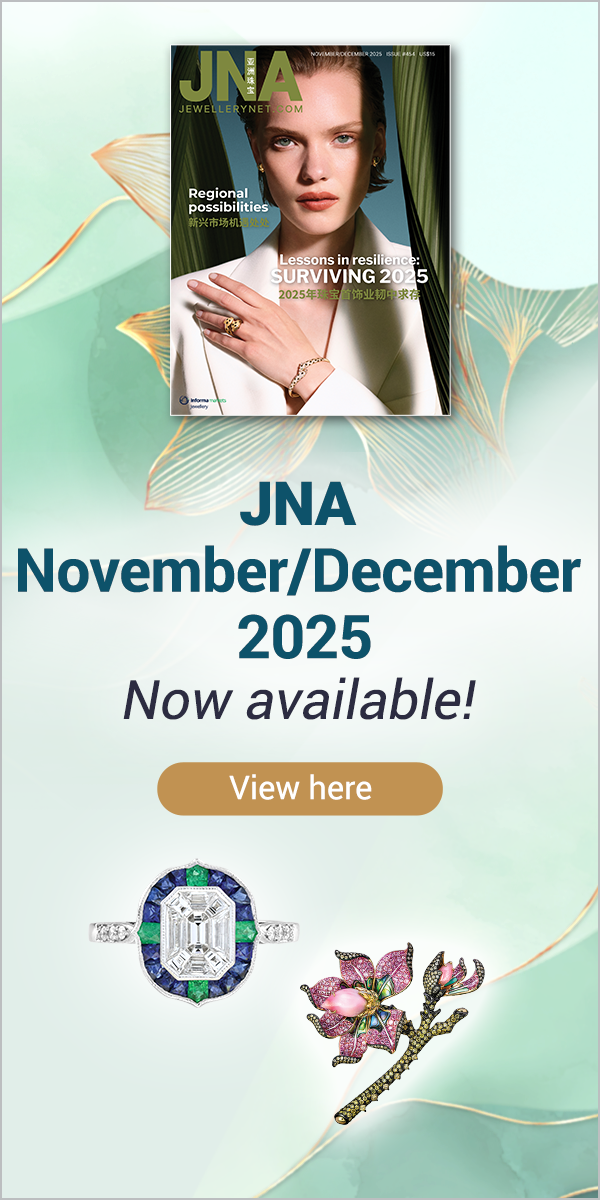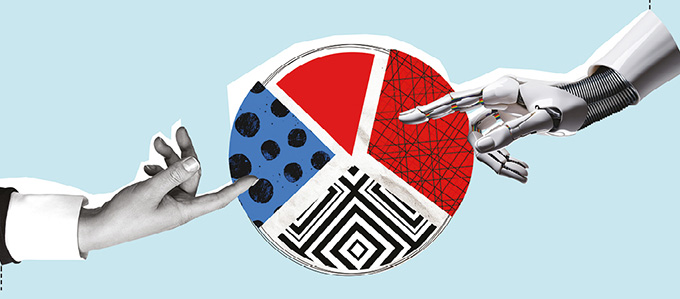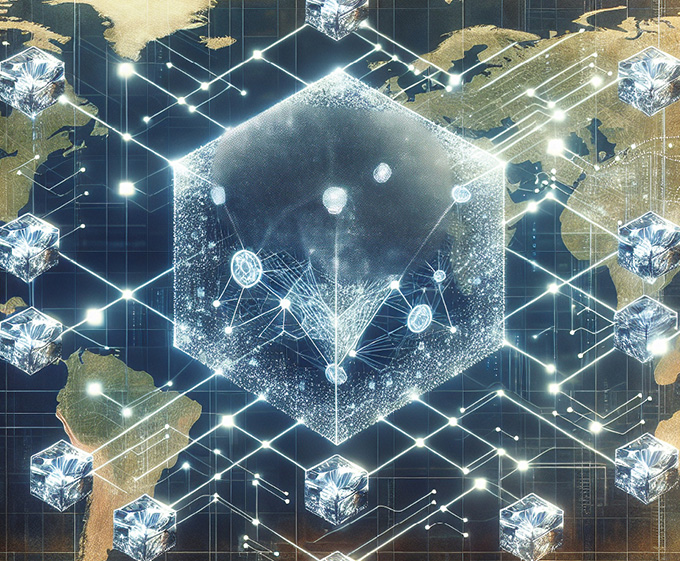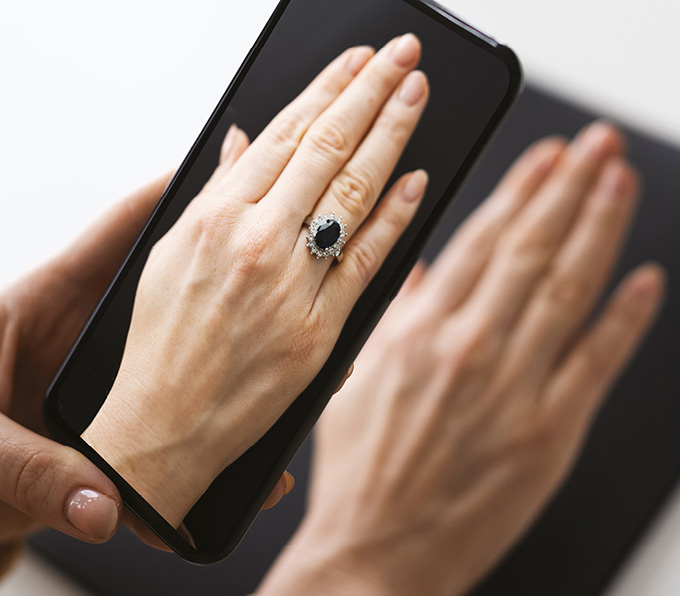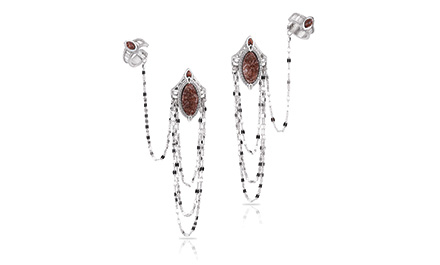The jewellery industry is witnessing an unprecedented surge in technological advancements that are revolutionising production, operations and efficiencies in the trade, with traceability platforms and artificial intelligence leading the charge.
This article first appeared in the JNA January/February 2025 issue.
Traceability platforms and artificial intelligence (AI) are reshaping the gem and jewellery industry, fundamentally altering processes and priorities in an increasingly digital world marked by economic and political uncertainties as well as evolving market preferences.
Blockchain first made its presence felt in the diamond space in 2018. Once framed as a transparency and provenance mechanism to enhance the diamond narrative, it has steadily evolved into a vehicle for integrity, sustainability and legitimacy in a geopolitically charged ecosystem and a socially conscious society.
For instance, given heightened vigilance in the past year over the entry of Russian diamonds in key markets, blockchain-powered traceability solutions have emerged as possible safeguards against such eventualities.
Wesley Tucker, CEO of Tracr, the De Beers-backed digital platform that tracks diamonds from mine to consumer told JNA, “While we did not build Tracr to regulate trade restrictions, our system has the best balance of scale, certainty and compliance, making it a seamless, effective and efficient way to prove the origin of diamonds.”
Provenance
The real game changer though is the wider commercial application of diamond traceability platforms for transparency, provenance and responsible sourcing. Such systems are now a powerful tool to counter market misgivings over the product’s origins and its environmental and social impact. Tracking platforms now abound in various forms, and traceable diamonds could indeed become a product category all its own, despite concerns over possible premiums for such goods.
Originally a De Beers initiative before becoming an industry-wide platform in 2023, Tracr covers the entire diamond supply chain. As of September 2024, it had tamper-proof digital fingerprints of 2.8 million rough diamonds.
Tucker said, “Every month, we load about a quarter of the world’s diamonds onto Tracr. It is quite a sizable portion of production, which keeps on increasing as we onboard more producers. The most recent joiners are Mountain Province Diamonds in Canada and Petra Diamonds in South Africa. We should have around 40 to 50 per cent of global production in the next 12 to 15 months.”
Tracr can register rough as small as three grainers, which would yield 30 points in polished. “Our algorithmic matching feature now enables us to trace rough diamonds through scans in different locations at scale. It can match a scan created in Botswana with a scan created in India to trace the rough all way back to the source,” Tucker shared.
Midstream and downstream expansion is a priority hence Tracr is actively growing its network and making the technology available at scale. Scanners are delivered to miners, manufacturers and retailers for them to add their production to the platform. Downstream partners include major diamond jewellery retailers such as Signet and Brilliant Earth.
“The manufacturers on Tracr already represent half of the world’s diamond production capacity, and this will only grow. We also want to see retailers stocking a larger percentage of diamonds that are traceable,” said Tucker.
Tracr also partners with laboratories and diamond solutions providers around the world such as the Gemological Institute of America, Sarine Technology Group and Innovseed on interoperability with their diamond grading reports and products.
Tamper-proof authentication
Patent-backed blockchain platform Authentia, for its part, places the emphasis on robust Intellectual Property (IP) protection in ensuring diamond authentication and verification. Driven by 26 IP governance principles, it offers a “Rule of Law” to police blockchain entries and guarantee a point of origin with nano markers, Internet of Things and a patented Certificate of Origin. These tools are then connected to 12 security measures that allow the rough diamond to be tied to the final polished product.
Bruno Scarselli, CEO of Authentia, said, “Without a policing body or authority to verify the data written on a block, can we be certain that the data has not been tampered with? A legal, patented framework is the only way to determine the value of the data and its authentication. Authentia is the next-generation data collection system that is ideal for any government agenda.”
Launched in February 2024, Authentia started with 90 mines in South Africa and a rough auction company. It now has 30 more mines on the platform and, at press time, was on the verge of signing an agreement with an African government to serve as the traceability vehicle for all their mining operations, according to Scarselli.
“We onboarded 200,000 rough stones in the eight months since our launch. There are four pilots ongoing to add several million rough stones by the first quarter of 2025,” he further disclosed.
It was in the second half of 2024 that Authentia began tapping the midstream and discussing pilot programmes for the retail sector.
Drawn by the system’s patented tools, DelGatto Finance Fund signed up in October, agreeing to offer debt finance for rough diamonds accompanied by Authentia’s Certificate of Origin as well as financing for polished diamonds with Authentia’s Title of Ownership. Dalumi Diamonds and Dison Gems joined the platform in November.
According to Scarselli, Authentia is the only company to guarantee a point of exit and entry in the world markets by using readers for rough and a smartphone app for the authentication of the polished diamonds.
“As the only legally patented traceability platform with IPs in just about every modern jurisdiction, I see Authentia transforming the diamond industry and propelling the industry forward,” he continued.
AI implications
AI is another transformative technological force in the jewellery industry. At Jewellery & Gem WORLD Hong Kong in September 2024, a session on “Practical Applications of Artificial Intelligence (AI) in the Jewellery and Gemstone Industry” delved into fresh AI innovations in diamond and coloured gemstone testing, jewellery design and marketing.
Diamond solutions firm Sarine Technology Group launched the first tech-based AI-driven polished diamond grading system in 1992 and, over the last decade, has invested more than US$100 million in developing new technology and services for the diamond trade.
David Block, CEO of Sarine, explained, “Most diamonds are graded manually by a gemmologist in a grading lab. Now, technology is being used – which we believe will revolutionise how diamonds are graded over the next five to 10 years.”
A major challenge in using AI tech in diamond grading is data collection. Block said copious amounts of data are needed to effectively train and teach a system. Sarine first used AI grading for round diamonds, so it collected massive amounts of diamonds in different colours, cuts and clarities to create a representation of the round diamond population in the world.
“One of our biggest advantages is having 100 million diamonds that go through our system annually and that equals a great deal of data. There is potential to create new products and services using those data,” remarked Block.
Coloured gems
AI technology is also making waves in the coloured gemstone sector. In 2023, Gübelin Gem Lab unveiled GemtelligenceTM, an AI-driven software that determines the origin of rubies, sapphires and emeralds, as well as heat treatments in rubies and sapphires.
Daniel Nyfeler, managing director of Gübelin Gem Lab, said the development of Gemtelligence was driven by a desire to transform gemmological expertise into readily accessible technology that can provide accurate analytical data absent inherent inconsistencies that human experts could make.
Gemtelligence’s algorithm, based on the latest deep learning architecture, recognises significant patterns among various data modalities, which, compared to gemmologists, provides heightened precision and robustness.
“This presents another advantage. We can reduce the amount of data that we feed into the software, and it will still perform better than human experts,” added Nyfeler. “It can also skip this one task, which is the most expensive and most labour-intensive process: Microscopy.”
The software is also capable of developing new features and recognising new patterns, which allow gem labs to shorten the pipeline for some gemstones and come up with a more effective way to test gems, he noted.
Design customisation
Jewellery design is also witnessing a renaissance of sorts, with the advent of generative AI technology.
Payal Shah, founder of jewellery brand L’Dezen, introduced an AI jewellery design platform, L’Dezen By You.AI, in partnership with Algoneering, an emerging AI technology solutions company focusing on the jewellery sector. “This collaboration empowers anyone to create personalised jewellery, transforming creative ideas into custom designs in real-time,” explained Shah. “This platform helps you bring your vision to life with no advanced
skills required.”
Users input prompts such as product category and style, to name a few, into the system to generate a customised jewellery design. The application takes about two minutes to come up with designs based on the prompts.
“You can explore different gemstones, materials and metals, among others, to spark new ideas for your custom design,” explained Shah. “The AI helps translate your ideas into reality. The magic behind the platform is its simplicity. You input your ideas, and the AI generates multiple designs – at least four in real time.”
The customer owns intellectual property rights to the jewellery piece. They also have the option to have the design stored electronically in the application’s database. A high-definition version of the design can likewise be downloaded.
An upcoming feature called Variation is also in the offing, which takes one of the four designs and generates eight new variations of the same style, according to Shah.
“This is what happens when imagination meets technology,” she added. “It is quick and intuitive. Technology is changing the way we think in jewellery design. And it is about new possibilities, not just for professionals, but also for anyone who is passionate about individuality.”
Marketing assistance
Picup Media, which specialises in high-tech jewellery photography, sees AI-enabled solutions helping companies successfully enter the digital market.
According to its sales director and early founding member Rocky Yu, jewellers are faced with three main challenges when taking jewellery pictures and selling online: Time, money and expertise. Picup Media’s AI-powered GemLightbox Pro addresses these by integrating content and marketing in the photography service.
AI comes into play once the picture of the product has been taken by the machine. “Instead of thinking about a caption for posting on Instagram or on your website, the AI is able to recognise the joy that it just captured and write the description for you automatically,” he explained.
The high-resolution video, pictures and product description are ready in 15 seconds, saving jewellers time and money.
“AI is here to help and not fully replace what humans can do,” noted Yu. “AI is not creative in the sense that it cannot replace natural human creativity. It does the work for you; helps you sell online and save time.”
Technology trends in 2025 and beyond according to Tracr CEO Wesley Tucker
• Industry shift from hands-on and loop-orientated operations to technology-driven and standardised structure
• Greater online engagement with emphasis on social media and consumer insights as younger consumers, who gravitate towards brands, form a larger part of the market
• Online activity turning towards research and advice, rather than actual purchases. Multichannel communication will be key to conversion, with storytelling playing a pivotal role
• Diamond-testing machines available downstream to build consumer confidence in their purchases
• AI-powered, high-speed grading to thrive in lab-grown space as lower product prices negate the need for expensive certificates
• Greater AI use for understanding and planning diamond manufacturing to drive efficiencies
• Increased adoption of Application Programming Interfaces (APIs), which enable machines to talk to each other, to surface and share data for traceability, provenance, standard processes and reports
